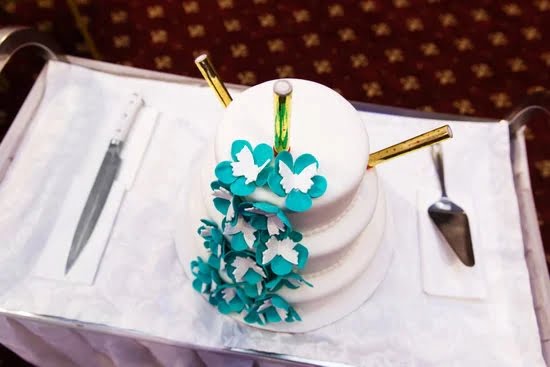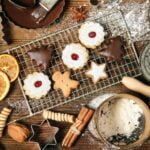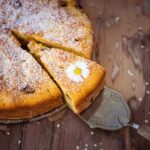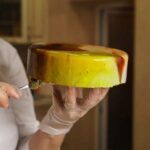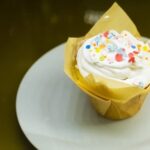Cake making and decorating is a delicious art form that combines the joy of baking with the creative expression of crafting beautiful and scrumptious treats. Whether you’re an amateur baker looking to improve your skills or a seasoned pro searching for new inspiration, this article will guide you through all aspects of cake making and decorating.
From basic tools and ingredients to advanced techniques and trends, we’ll provide you with everything you need to know to create stunning cakes that taste as good as they look.
In this comprehensive guide, we’ll cover a range of topics designed to enhance your cake making and decorating experience. Beginning with the basics, we’ll explore the essential tools and ingredients necessary for successful bakes. We’ll then delve into the step-by-step process of baking the perfect cake from scratch, sharing tips and tricks along the way.
As we progress, we’ll turn our attention to the flavors, fillings, and frostings that can elevate a simple cake into a culinary masterpiece. We’ll also dive into the world of sculpting cakes, learning techniques and tips for creating unique designs that are sure to impress.
Of course, no discussion of cake making and decorating would be complete without mastering piping and other decorative techniques. You’ll learn how to achieve professional-looking finishes using various icing styles and explore innovative ideas for special occasions.
Throughout this article, we will also explore modern trends in cake decorating, providing insight into contemporary styles and themes that can add an extra touch of creativity to your creations. Expert tips and tricks from professional decorators will further enhance your skills while addressing common concerns in frequently asked questions.
So whether you dream of crafting exquisite wedding cakes or simply want to indulge in homemade treats bursting with flavor, join us on this delectable journey as we unlock the secrets behind successful cake making and decorating. Get ready to elevate your skills, delight your taste buds, and discover endless possibilities in this sweet realm.
The Basics
Cake making and decorating requires a set of essential tools and ingredients to ensure the success of your creations. Whether you are a beginner or an experienced baker, having the right equipment and ingredients will make your cake-making journey easier and more enjoyable.
Tools for Cake Making
To start with, you’ll need some basic tools for cake making. These include mixing bowls in various sizes, a sturdy whisk or an electric mixer, measuring cups and spoons, a rubber spatula, a cake pan or pans (depending on the recipe), parchment paper or non-stick spray for lining the pans, and a cooling rack to cool your baked cakes.
In addition to these basic tools, you may also want to invest in additional equipment such as a cake leveler for even cake layers, an offset spatula for smooth frosting application, piping bags and tips for decorative piping work, and a turntable to help with smoothly rotating your cake while decorating.
Ingredients for Cake Making
The key ingredients for cake making include flour, sugar, eggs, butter or oil (depending on the recipe), baking powder or baking soda (or both), salt, flavors such as vanilla extract or almond extract, and liquid such as milk. The type and amount of these ingredients will vary depending on the recipe you are using.
It’s important to use high-quality ingredients when making cakes as they significantly impact the flavor and texture of the final product. Always opt for fresh eggs at room temperature as they provide optimal structure in cakes. Similarly, use unsalted butter instead of margarine or shortening as it adds richness to the batter. Additionally, sift your dry ingredients like flour before incorporating them into the batter to ensure a smooth consistency.
By having these essential tools and high-quality ingredients at hand, you’ll be well-prepared to embark on your cake making journey with confidence. Whether you’re baking a simple sponge cake or an elaborate multi-layered creation, these tools and ingredients will give you a solid foundation for all your cake making and decorating endeavors.
From Scratch
Baking a cake from scratch can be a rewarding and delicious experience. However, it can also be intimidating for beginners. In this section, we will guide you through the step-by-step process of baking the perfect cake.
Gather Your Ingredients and Equipment
Before you start baking, make sure you have all the necessary ingredients and equipment. Here’s a list of the basic items you’ll need:
- Flour: All-purpose flour is commonly used for cakes, but depending on the recipe, you may need cake flour or self-rising flour.
- Sugar: Granulated sugar is typically used in cake recipes, but some recipes may call for brown sugar or powdered sugar.
- Fats: Butter or vegetable oil are commonly used fats in cake baking.
- Eggs: Room temperature eggs are best for achieving uniform mixing.
- Leavening agents: Baking powder and/or baking soda help the cake rise.
- Liquid: Milk or buttermilk is often used to moisten the batter.
- Flavorings: Vanilla extract is a common flavoring, but you can also use almond extract or other extracts to enhance the taste of your cake.
In terms of equipment, you’ll need measuring cups and spoons, mixing bowls, an electric mixer (or whisk if doing it by hand), a spatula for scraping down the sides of the bowl, and a cake pan.
Follow the Recipe and Prepare the Batter
Once you have gathered all your ingredients and equipment, it’s time to follow your chosen recipe. Carefully read through the instructions before starting to ensure you understand each step.
Start by preheating your oven according to the recipe’s instructions. Then grease and flour your cake pans to prevent sticking.
Next, mix together your dry ingredients in one bowl and your wet ingredients in another. Gradually add the dry mixture into the wet mixture while mixing on low speed. Be careful not to overmix, as this can result in a dense and tough cake.
Baking and Testing for Doneness
Pour the batter into the prepared cake pans and smooth the tops with a spatula. Place the pans in the preheated oven and bake according to the recipe’s recommended time and temperature.
To test for doneness, insert a toothpick or cake tester into the center of the cake. If it comes out clean or with a few crumbs clinging to it, your cake is done. If not, continue baking for a few more minutes before testing again.
Once fully baked, remove the cakes from the oven and let them cool in their pans for a few minutes. Then transfer them to wire racks to cool completely before frosting and decorating.
With these step-by-step instructions, you’ll be well on your way to baking the perfect cake from scratch. Experiment with different flavors, fillings, and frostings to create your own signature cakes that will impress friends and family alike. Happy baking.
Let’s Get Creative
When it comes to cake making and decorating, one of the most enjoyable aspects is experimenting with different flavors, fillings, and frostings. These elements can elevate a simple cake into a decadent dessert masterpiece. Whether you’re baking for a birthday party or just want to satisfy your sweet tooth, here are some exciting options to try.
- Cake Flavors: The flavor of the cake is the foundation of any delicious creation. While classic vanilla and chocolate are always crowd-pleasers, don’t be afraid to explore unique flavors such as lemon, red velvet, or even matcha green tea. Experimenting with different extracts, like almond or coconut, can add interesting undertones to your cakes as well.
- Fillings: Adding a filling between cake layers adds moisture and flavor. Fruit preserves or curds are popular options for adding a burst of fruity goodness. For a creamier filling, consider using buttercream frosting in various flavors such as chocolate ganache or salted caramel. If you want to take it up a notch, try incorporating fresh fruit or even Nutella spread for an indulgent treat.
- Frostings: The frosting not only adds visual appeal but also enhances the taste of your cake. Buttercream frosting is a versatile option that comes in different flavors and can be easily tinted with food coloring for decorative purposes. Cream cheese frosting pairs well with carrot cakes or red velvet cakes due to its tanginess. Fondant is another popular choice for creating sleek and smooth finishes on cakes.
| Cake Flavor | Filling | Frosting |
|---|---|---|
| Vanilla | Strawberry preserves | Buttercream |
| Chocolate | Raspberry jam | Ganache |
| Lemon | Lemon curd | Cream cheese frosting |
Remember, these are just a few suggestions to inspire your creativity. Feel free to mix and match flavors, fillings, and frostings to create your own unique cake creations. The possibilities are endless, and the joy of cake making and decorating lies in discovering delicious combinations that will surprise and delight your taste buds.
Sculpting Magic
Cake carving is a fantastic way to create unique and eye-catching designs for special occasions. With the right techniques and tips, you can turn a simple cake into a work of art. Whether you want to make a sculpted animal cake or recreate a famous landmark, mastering cake carving will open up endless possibilities for your decorating skills.
One of the most important aspects of cake carving is selecting the right type of cake. Dense and sturdy cakes like pound cake or sponge cake work best, as they are less likely to crumble or break during the carving process. It’s also important to chill your cake before you start carving to make it easier to work with.
When it comes to tools, having the right ones can make all the difference in achieving clean and precise cuts. A serrated knife is essential for carving the initial shape of your design, while smaller knives or scalpel-like tools can be used for finer details. A turntable is also helpful, as it allows you to rotate your cake easily while working on different angles.
To begin the actual carving process, start by carefully cutting away any excess cake that may need to be removed to achieve your desired shape. Use gentle sawing motions with your knife and always take your time to avoid making any mistakes. If needed, you can stack multiple layers of cake with icing in between to create more intricate designs and shapes.
Once you have carved your base shape, it’s time to add some dimension and depth using buttercream or other fillings. This will not only enhance the flavor but also help in creating intricate details such as layers or sections in your design. After filling and stacking the layers, crumb coat your cake with a thin layer of frosting before applying the final layer of buttercream for a smooth finish.
| Cake Carving Techniques and Tips | Benefits |
|---|---|
| Selecting the right type of cake | Less likely to crumble or break during carving |
| Using the appropriate tools (serrated knife, smaller knives, turntable) | Achieve clean and precise cuts |
| Carefully cutting away excess cake before shaping | Achieve desired shape without mistakes |
| Adding dimension and depth with fillings such as buttercream | Create intricate details and enhance flavor |
The Icing on the Cake
Piping and decorating techniques are what truly bring a cake to life. Whether you’re a beginner or experienced baker, mastering these skills will take your cake making and decorating to the next level. In this section, we will explore different piping tips and techniques, as well as decorative elements that can elevate the look of any cake.
To start with, let’s look at the essential piping tools you’ll need. These include piping bags, couplers, and piping tips. Piping bags are available in disposable and reusable options, so choose the one that suits your needs.
Couplers allow you to easily change tips without changing the entire bag of icing. When it comes to piping tips, there are endless options to choose from – round tips for outlining and writing, star tips for rosettes and borders, leaf tips for foliage designs, petal tips for realistic flower details, and many more. Experimenting with different tip sizes and shapes will help you create a wide variety of designs.
Next, let’s delve into different piping techniques. One of the most basic techniques is the classic rosette swirl using a star tip. Start from the center of the cake and pipe in a circular motion towards the outer edge to create beautiful swirls.
Another popular technique is creating ruffles using a petal tip. Squeeze gently while moving in a back-and-forth motion to achieve soft ruffled edges. Other techniques include basketweave patterns for textured looks, shell borders for elegance, and lace designs for intricate detailing.
In addition to piping techniques, adding decorative elements can further enhance your cake’s appearance. Edible flowers like roses or pansies can be created using gum paste or fondant and give your cake an elegant touch. Fondant cutouts in various shapes such as hearts or stars can be strategically placed around the cake or used as cake toppers.
You can also use edible glitters or sprinkles to add shimmer or texture, and edible paints or food coloring for hand-painted designs. These decorative elements allow you to customize your cake based on the occasion or theme.
With practice and experimentation, you can master piping and decorating techniques that will truly elevate your cake making and decorating skills. Whether you’re creating a simple birthday cake or an elaborate wedding cake, these techniques and decorative elements will help you create show-stopping designs that are sure to impress. So grab your piping bag, try out different tips and techniques, and let your creativity run wild.
Wow Factor
Theme-based Cakes
One way to add the wow factor to your cake decorations is by creating theme-based cakes for special occasions. Whether it’s a birthday party, wedding, or baby shower, selecting a theme can help you design a cake that truly stands out.
For example, for a beach-themed party, you can decorate the cake with edible seashells, palm trees, and colorful beach towels. Similarly, for a superhero-themed birthday party, you can create a cake with edible comic book characters or vibrant cityscapes.
Interactive Cakes
Another innovative idea is to make interactive cakes that surprise and engage the guests. This involves incorporating elements that allow the recipient of the cake to interact with it in some way. For instance, you can create a “surprise inside” cake by hiding edible objects such as candies or small toys within the layers of the cake. When it is cut open, the hidden items will be revealed and add an element of excitement to the celebration.
Gravity-defying Cakes
For those looking to push their creativity further, gravity-defying cakes are an excellent choice. These cakes give the illusion that objects are floating or suspended in mid-air when in fact they are supported through clever structural designs and supports. The possibilities are endless – from cakes with floating teapots pouring tea into cups below to cakes with cascading flowers that appear weightless.
Edible Art Masterpieces
Take your cake decorations to another level by turning them into edible art masterpieces. With advanced techniques such as painting on fondant or creating elaborate sugar sculptures, you can transform your cake into a work of art that not only tastes delicious but also wows everyone visually.
Whether you choose one of these innovative decoration ideas or combine multiple techniques together, always remember that the key to creating a wow factor lies in attention to detail, precision, and practice. Experiment with different designs, flavors, and techniques to find your unique style and create cakes that leave a lasting impression on special occasions.
Embrace the Trends
One of the exciting aspects of cake decorating is that it is constantly evolving with new trends and styles. Embracing these modern cake decorating styles and themes can add a touch of novelty and creativity to your creations. Whether you are a professional baker or a home baker looking to impress your friends and family, exploring these trends will take your cake decorating skills to the next level.
One popular trend in modern cake decorating is the use of geometric shapes. Incorporating clean lines, sharp angles, and symmetrical patterns can create visually stunning cakes. You can achieve this look by using fondant or buttercream to create geometric shapes on the surface of the cake. For an added touch, consider incorporating metallic accents or edible paints to enhance the geometric design.
Another trend that has taken the cake decorating world by storm is “drip cakes.” These cakes feature luscious drips of ganache or melted chocolate cascading down the sides of the cake, creating a mouthwatering effect. The contrasting colors and textures make drip cakes not only delicious but also visually appealing. Experiment with different flavors and colors for your drips to match the theme or occasion.
In recent years, there has also been a surge in popularity for “naked cakes” or “semi-naked cakes.” These rustic-looking cakes are characterized by their exposed layers and minimal frosting on the outside. The charm lies in showcasing the natural beauty of the layers while adding simple yet elegant decorations such as fresh flowers, fruit slices, or powdered sugar dusting. Naked cakes are perfect for those who prefer a lighter and less sweet option while still being visually stunning.
As you explore modern cake decorating styles and themes, keep in mind that personalization is key – let your imagination run wild. From hand-painted designs to textured finishes like ruffles or marbling, there are endless possibilities for creating unique masterpieces. Stay updated with social media platforms like Instagram and Pinterest where bakers often showcase their latest creations, inspiring others to try new techniques and designs.
Expert Tips and Tricks
Decorating a cake is an art that requires skill, creativity, and attention to detail. Professional cake decorators have spent years honing their craft and mastering various techniques. In this section, we will uncover some of the top secrets and tips from these experts that can take your cake decorating skills to the next level.
- Invest in Quality Tools: One of the secrets to professional-looking cakes lies in using high-quality tools. From offset spatulas and piping bags to precision cutters and stencils, having the right tools can make a world of difference in achieving clean lines, smooth surfaces, and intricate designs.
- Create a Crumb Coat: A crumb coat is a thin layer of frosting that acts as a base for your final layer. Applying a crumb coat before frosting your cake helps seal in any loose crumbs, ensuring a smooth finish. It also makes it easier to correct any imperfections before proceeding with the final decoration.
- Use Buttercream Smoothing Techniques: To achieve perfectly smooth buttercream finishes on your cakes, professionals swear by the Viva paper towel method. Simply frost your cake with buttercream and use a Viva paper towel or a bench scraper to gently smooth out the surface. The texture of the paper towel helps create a flawless result.
- Experiment with Flavors: Adding unique flavor combinations can elevate your cakes to new heights. Professionals recommend experimenting with different extracts (such as almond, lemon, or coconut) or mixing complementary flavors like chocolate and raspberry or caramel and sea salt.
- Get Creative with Fillings: Injecting fillings into your cakes can add moisture and surprise bursts of flavor. Consider using fruit preserves, ganache, flavored whipped cream, or even pieces of fresh fruit as fillings between layers.
- Master the Art of Drip Cakes: Drip cakes have become increasingly popular in recent years. Achieving the perfect drip effect requires practicing your pouring technique and ensuring the consistency of your ganache or other drip icing. Experiment with different colors, flavors, and drizzle patterns to create stunning visual effects.
- Create Dimension with Fondant: Fondant is a versatile medium that allows for intricate cake designs. Professionals recommend rolling out fondant to an even thickness, using powdered sugar or cornstarch to prevent sticking. When applying fondant to a cake, smooth it gently starting from the top and working your way down to avoid air bubbles or wrinkles.
- Personalize with Edible Images: Edible images are a fantastic way to customize cakes for special occasions. They can be printed on sheets of edible paper using food coloring inks and then adhered to the surface of the cake. To ensure a seamless integration, professionals suggest applying the image onto freshly frosted cake before it has time to set.
- Add Depth with Piping Techniques: Piping is an essential skill in cake decorating that allows you to create intricate designs and decorative elements. From borders and rosettes to lettering and lace-like patterns, mastering different piping techniques like shell, star, or petal can add depth and texture to your cakes.
By incorporating these expert tips and tricks into your own cake making and decorating endeavors, you can enhance your skills, unleash your creativity, and impress friends and family with beautifully decorated creations. Remember that practice makes perfect, so don’t be afraid to experiment and have fun along the way.
Frequently Asked Questions
One of the most common concerns for cake making and decorating is achieving the perfect texture and moistness in the cake. Many people struggle with dry or dense cakes that lack flavor. To ensure a moist and tender cake, it’s important to measure ingredients accurately and follow the recipe instructions closely.
Overmixing the batter can result in a dense cake, so mix until just combined. Adding a tablespoon or two of sour cream, buttermilk, or yogurt can also help to enhance moisture.
Another common concern is achieving smooth, even frosting on a cake. Crumbs can sometimes mix into the frosting and create an uneven appearance. To avoid this issue, it’s helpful to first apply a thin layer of frosting called a crumb coat. This will seal in any loose crumbs and provide a smooth surface for the final layer of frosting. Additionally, using an offset spatula or bench scraper can help achieve even layers of frosting.
Many beginners also struggle with piping techniques for decoration. Piping allows you to create intricate designs such as borders, flowers, and lettering on cakes. A key tip is to ensure that your icing or buttercream is at the right consistency for piping – not too stiff that it won’t flow through the piping bag, but not too soft that it loses its shape. Practice with different tips and pressure control to achieve different effects.
| Concern | Solutions |
|---|---|
| Dry or dense cakes | Measure accurately, follow recipe instructions properly, avoid overmixing; add sour cream/buttermilk/yogurt for moisture. |
| Crumbs mixed into frosting | Apply a crumb coat before final layer of frosting; use an offset spatula or bench scraper for even layers. |
| Piping techniques | Ensure proper consistency of icing/buttercream; practice with different piping tips and pressure control. |
Conclusion
In conclusion, cake making and decorating is a delicious art that can be enjoyed by both beginners and experienced bakers. By mastering the basics of this craft, you can create beautiful and mouth-watering cakes that will impress your family and friends.
Throughout this article, we have explored the essential tools and ingredients needed for cake making and decorating. From measuring cups to piping bags, each item plays a crucial role in achieving the perfect cake. We have also learned how to bake a cake from scratch, step-by-step, ensuring that it is moist and flavorful.
Furthermore, we have discovered different cake flavors, fillings, and frostings that can take your creations to the next level. Whether you prefer classic flavors like chocolate or vanilla or want to experiment with more unique combinations, the possibilities are endless. Additionally, we have explored various techniques for sculpting cakes into stunning designs as well as mastering piping and decorating techniques for a professional finish.
To truly wow your guests at special occasions, we have provided innovative cake decoration ideas that will leave everyone in awe. From elegant floral designs to modern geometric patterns, there is a style for every event and theme. And as trends continue to evolve in the world of cake decorating, it’s important to embrace new styles and themes to stay up-to-date.
Frequently Asked Questions
What do I need to know about decorating a cake?
Decorating a cake involves several key aspects that one needs to know in order to create a visually appealing and delectable masterpiece. First and foremost, it is important to have a clear vision or design concept before starting the decoration process. This could be achieved by sketching the design or gathering inspiration from various sources.
Understanding different types of frosting, such as buttercream or fondant, is crucial as they require different techniques and tools for application. A knowledge of basic piping techniques, like rosettes, borders, and writing, can greatly enhance the overall appearance of the cake. Additionally, one should also learn about color theory and how to use different edible decorations like sprinkles, flowers, or chocolate ganache to add texture and visual interest to the cake.
What are the 7 different cake decorating techniques?
There are seven widely used cake decorating techniques that every aspiring decorator should become familiar with. Firstly, there’s piping which involves using a pastry bag fitted with various tips to create intricate designs with frosting on the cake surface. Secondly, there’s fondant which refers to a smooth sugar paste often rolled out into thin sheets and placed over the entire cake or formed into decorative shapes for detailing purposes.
Another technique is called stenciling where a pre-cut stencil is placed on top of the cake while powdered sugar or cocoa powder is gently dusted over it to yield an intricately-designed pattern on the surface below. Other techniques include gum paste modeling (where edible modeling clay-like material is used to create 3D decorations), hand painting (designs are painted directly onto the cake using food-safe paints), airbrushing (a tool sprays colored food dye onto the surface to achieve seamless gradients), and marbling (mixing two contrasting colors together in a swirling pattern).
What does a beginner need for cake decorating?
For beginners venturing into the world of cake decorating, there are several essential tools and supplies required that will make their journey more manageable and enjoyable. A sturdy turntable is crucial for easy maneuverability while frosting and decorating the cake. An offset spatula is needed to apply and smoothen the frosting on the cake’s exterior. A basic piping set with a few different tips will allow beginners to experiment with various designs and add intricate details.
Additionally, investing in a set of quality pastry bags and couplers will enable decorators to easily change out the tips as needed. Basic gel-based food coloring is essential for achieving vibrant colors in frosting or fondant. Beginners should also have access to an assortment of cake decorating brushes for painting designs or dusting powdered sugar and other decorative elements. Lastly, having a reliable assortment of measuring cups, mixing bowls, and spatulas are instrumental for accurate measurements and smooth preparation of frostings or batters.

Welcome to our cake decorating blog! My name is Destiny Flores, and I am the proud owner of a cake decorating business named Cake Karma. Our mission is to provide delicious, beautiful cakes for all occasions. We specialize in creating custom cakes that are tailored specifically to each customer’s individual needs and tastes.

